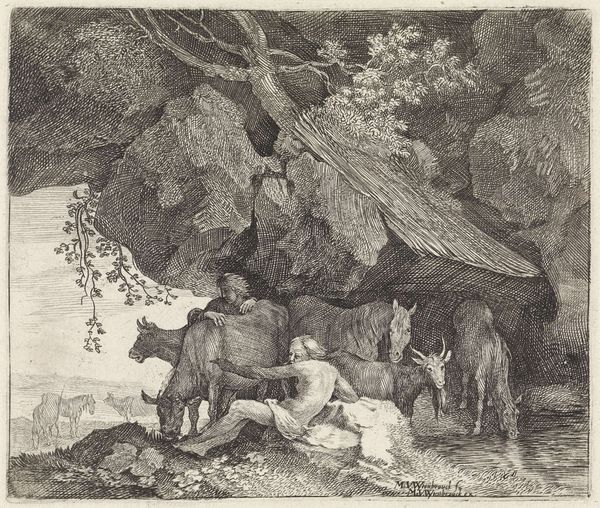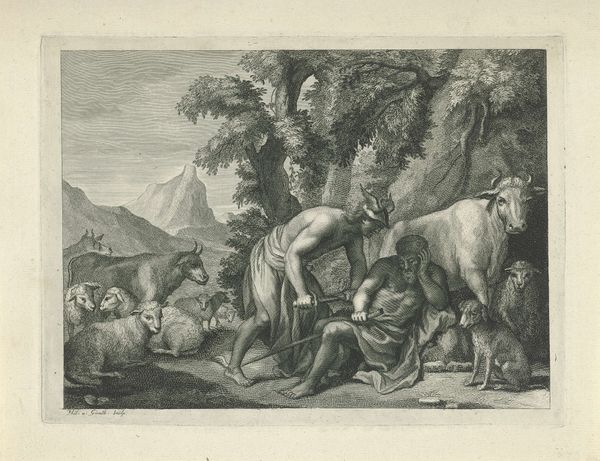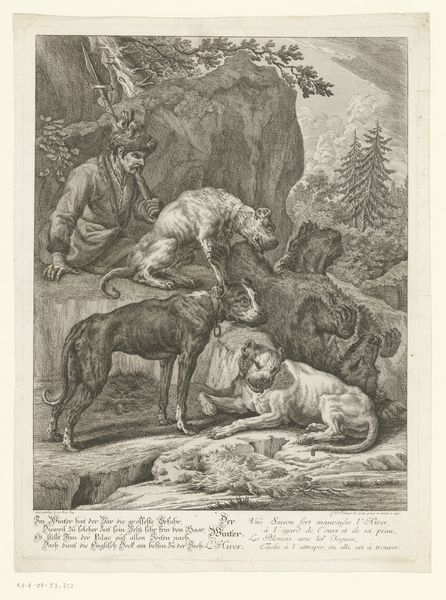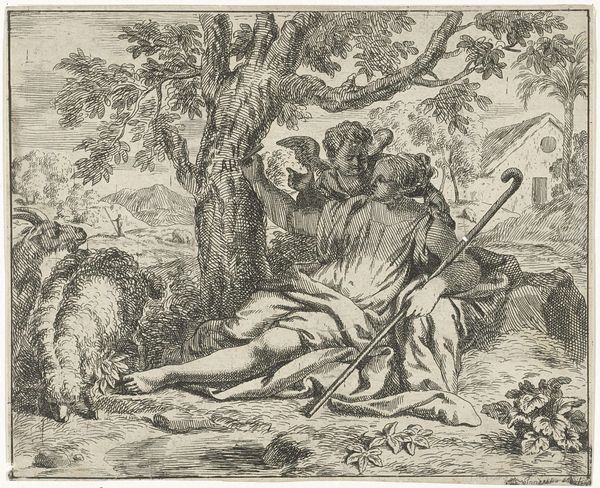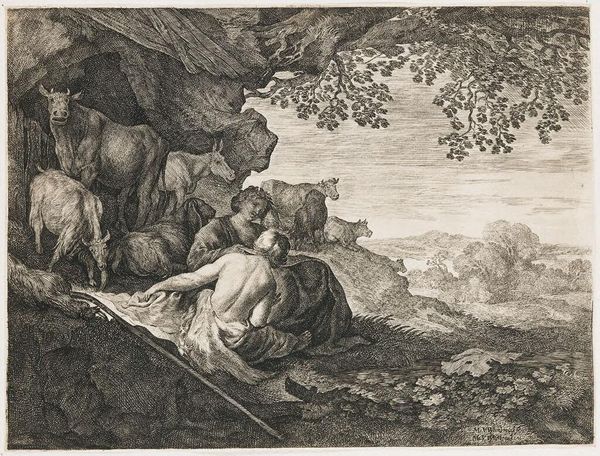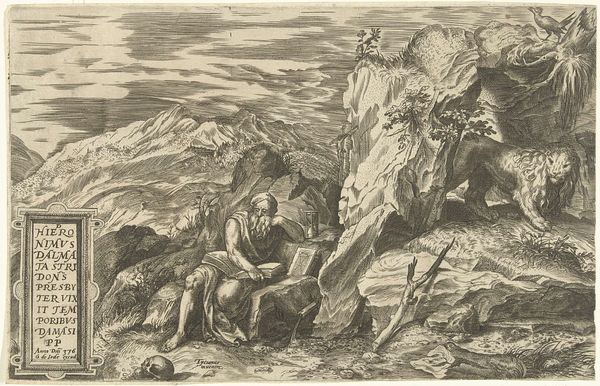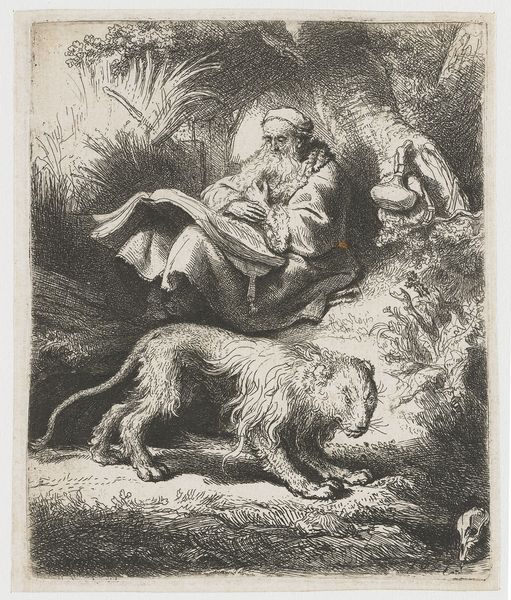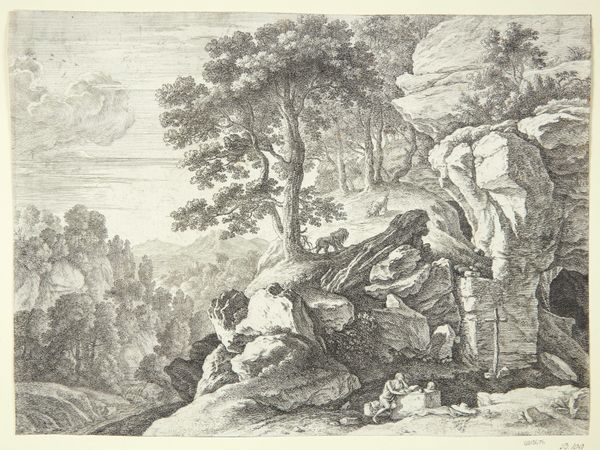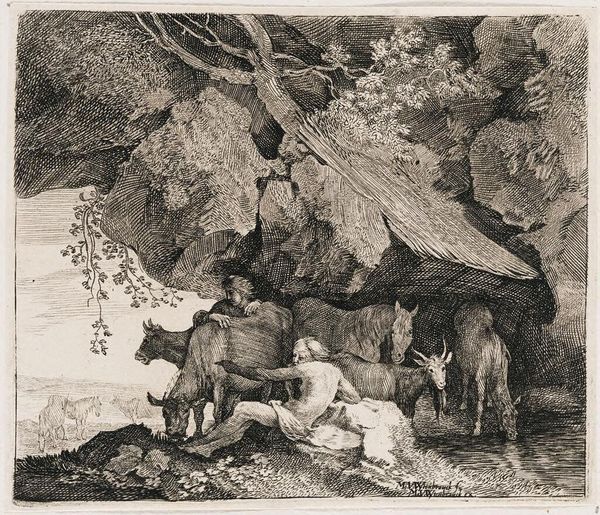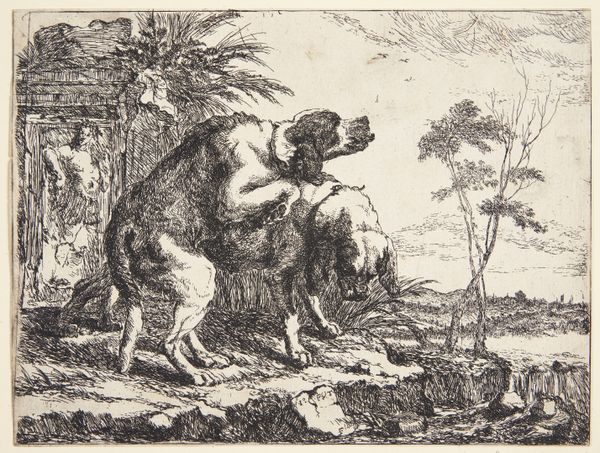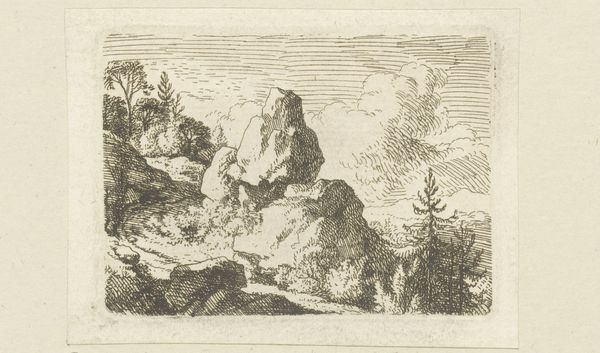
etching
#
baroque
#
etching
#
landscape
#
figuration
#
history-painting
Dimensions: height 126 mm, width 148 mm
Copyright: Rijks Museum: Open Domain
Editor: This is Moyses van Wtenbrouck's "Apollo hoedt de kudde van Admetus," made sometime between 1600 and 1647. It’s an etching, and it feels so detailed for that medium! There’s this interesting interplay of light and shadow. What catches your eye in this piece? Curator: I'm struck by the etching itself. Look at how van Wtenbrouck uses the *materiality* of the lines to evoke texture – the rough fur of the animals, the smooth skin of Apollo. It’s not just representation, but an emphasis on the means of production. What kind of tools would he have used to achieve this effect? Editor: That's fascinating! I hadn’t considered that. So, rather than focusing solely on the mythological scene, we’re looking at the labor involved, the process? Curator: Exactly! The narrative of Apollo tending Admetus's herd is a pretext. Think about the socio-economic context: Who was commissioning etchings like these? Who had access to the materials and skill? Was it challenging the perception of a ‘fine art’? Consider the democratization of art, as etchings made images accessible, in comparison to unique painting for the elite. Editor: So, in a way, the *material* is tied to *labor* and potentially broader consumption of art… Curator: Precisely. This work raises questions about art’s accessibility. Was van Wtenbrouck consciously subverting the high/low art divide, or simply working within existing structures? Editor: I’d never thought of landscape through this material lens before! I'll have to look at other baroque etchings with that question in mind. Curator: And that shift in perspective—examining the hand of the artist and the accessibility of the image—can deepen our appreciation of the historical moment, beyond just the mythical scene portrayed.
Comments
No comments
Be the first to comment and join the conversation on the ultimate creative platform.
